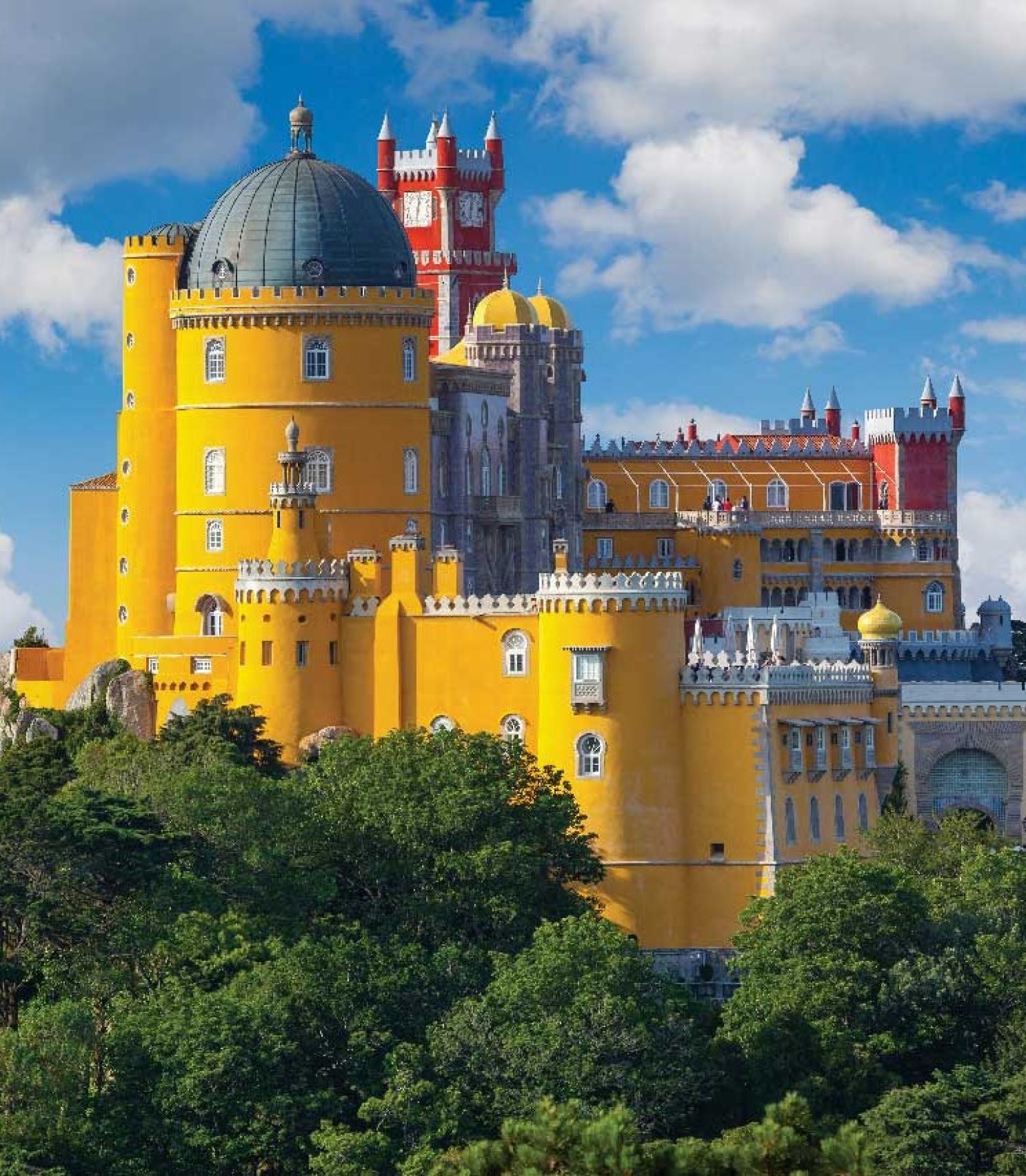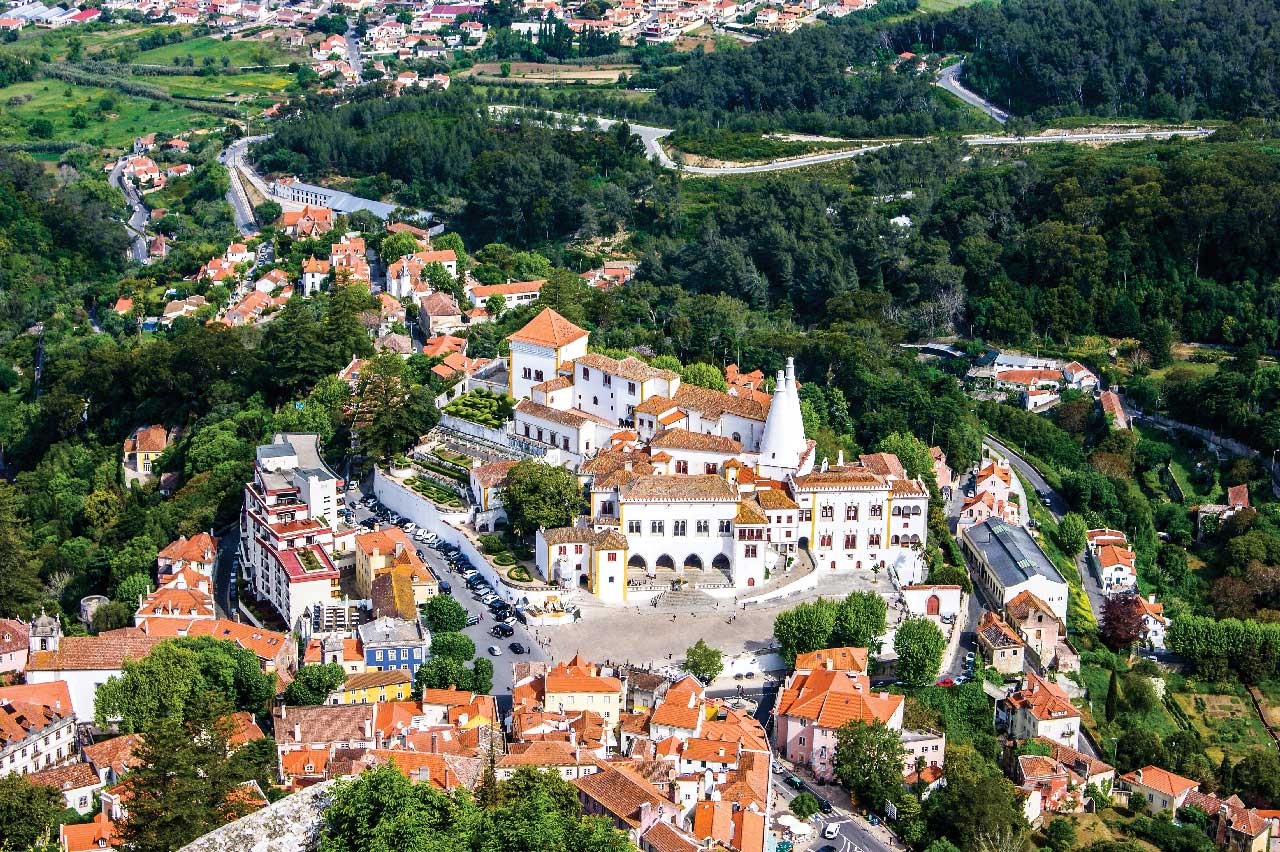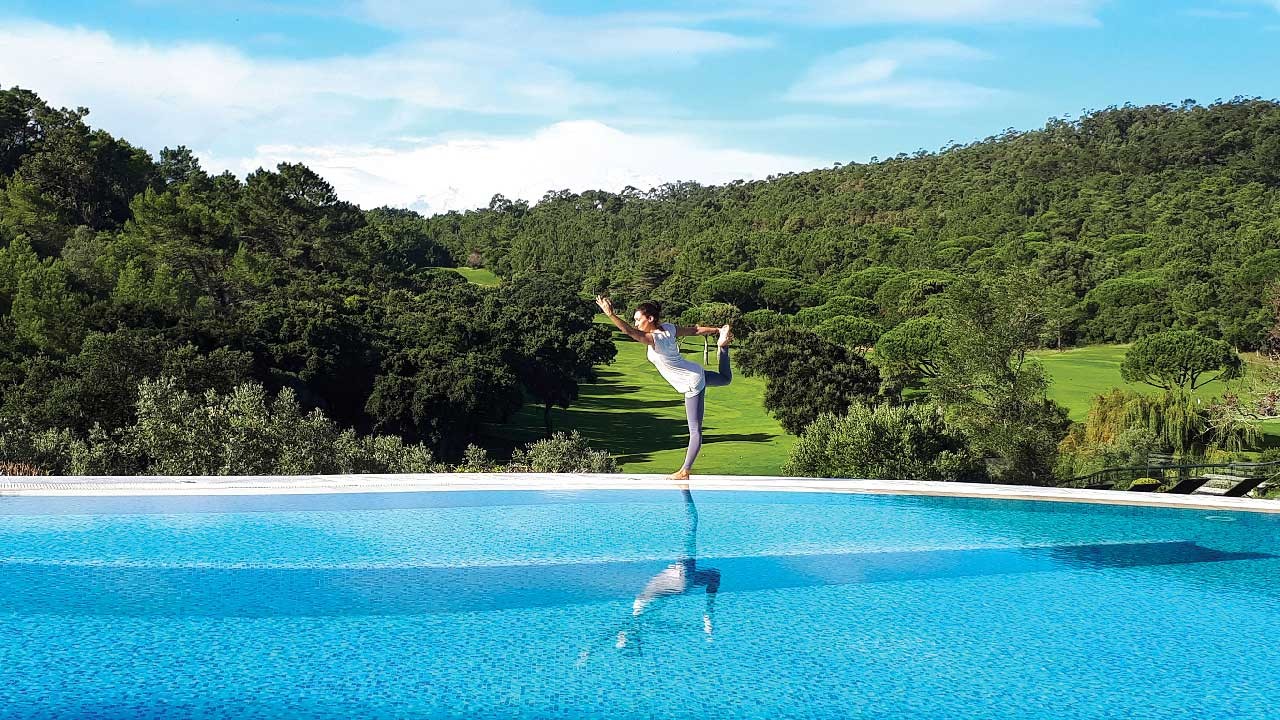It is not uncommon to try to cover Sintra in a day, but that is ambitious. Patricia Serrano, who runs travel website
FreshTraveler, has ventured to Sintra from Lisbon by pedicab just to admire the medieval architecture and its surroundings—“the ruins of the Castelo dos Mouros stand high above Sintra with beautiful views,”—but she notes you can easily spend a few days exploring all the sights of this historic spot instead of trying to cram it all into 24 hours.
No visit to Sintra is complete without taking in the Palácio Nacional da Pena, high atop a cliff: It might well be the most impressive of the town’s attractions, with its vividly painted walls and amalgamation of styles ranging from North African to medieval Gothic. It was commissioned around 1840 by King Ferdinand II, who wanted it to resemble a scene from an opera and transformed it from monastic ruins into a fabulous palace that served as a summer residence for the Portuguese royal family. Engineer Wilhelm Ludwig von Eschwege helped oversee the project, inspired in part by the German castles along the Rhine. Visitors will marvel at the palace’s Moorish arches, stucco walls, and clock tower, as well as its splendid Islamic and medieval elements, including ornate stained-glass windows.
Photographer and brand strategist Uma Muthuraaman, visiting the town with her family from Zurich, loved the bright yellow and red facade of the Pena palace: “It loomed over us like a dazzling jewel and remains our most memorable image of Sintra.”
“Pena introduced Revival architecture to Portugal in the 1840s,” explains Mendes. “By reviving architectural styles of the past, the palace tells the history of Portugal through its design.” She draws particular attention to features such as a chapel altar dating back to the 16th century, and the detailing on the walls of the king’s bedroom—similar to the ceiling of the chapel in the Palácio Nacional de Sintra.
Affectionately known to locals as the Paço Real, the stunning Palácio Nacional de Sintra, with its white conical chimneys, also has its roots in royalty. It is Sintra’s oldest palace: Initially constructed in the Middle Ages by the Moors, it was subsequently rebuilt and enlarged by successive Portuguese monarchs, including João I in the 14th century. Not unlike Versailles, it sprawls over several floors and is filled with treasures like the Swan Room, replete with graceful painted swans on the ceiling. The pièce de résistance in this beautiful palace may well be the Sala dos Brasões, a domed room whose ceiling and walls glitter with azulejo tiles: It showcases the coats of arms of King Manuel I, his children, and 72 noble households.
Only a few hundred feet away, the Castelo dos Mouros, situated on a hill opposite the Pena palace, is a beautiful set of ruins that date back to the Moorish rule of the 8th century. A small museum of artefacts found in the ruins is located on site, but the sheer beauty of the castle, with its turrets and walls, is a treat in itself (and perfect for that Instagram selfie).
A more recent architectural gem is
La Quinta da Regaleira, a regal home with gardens to rival those of any palace. Especially popular with visitors is the larger of two swirling, mossy Initiation Wells, with its winding staircase seemingly plucked from the pages of The Lord of the Rings. The Quinta was built in the late 1800s by architect Luigi Manini, at the behest of António Augusto Carvalho Monteiro.
Muthuraaman found the gardens of Quinta da Regaleira wild and alluring: “[They] had many elements of a royal garden, like ponds, statues, and fountains, but the highlight was definitely the grottos! Every square inch of this garden felt surreal. We thought we were being led into a movie set, portraying a different era and time—untouched by humans.”






